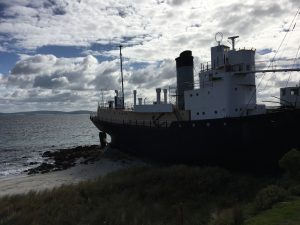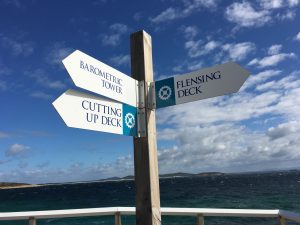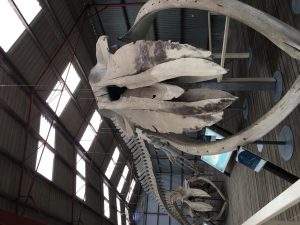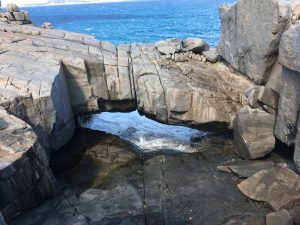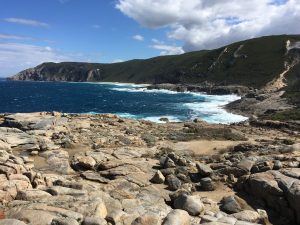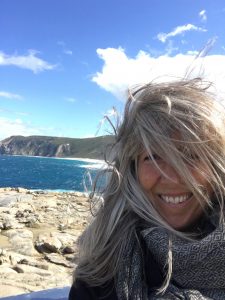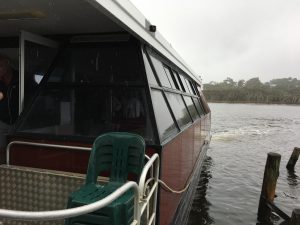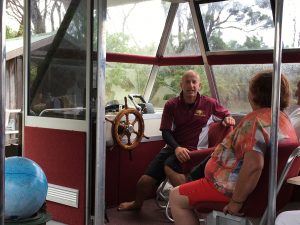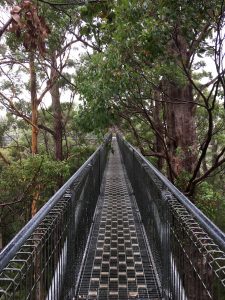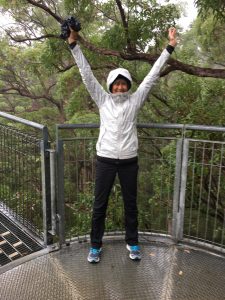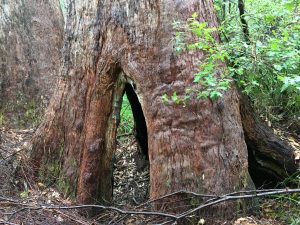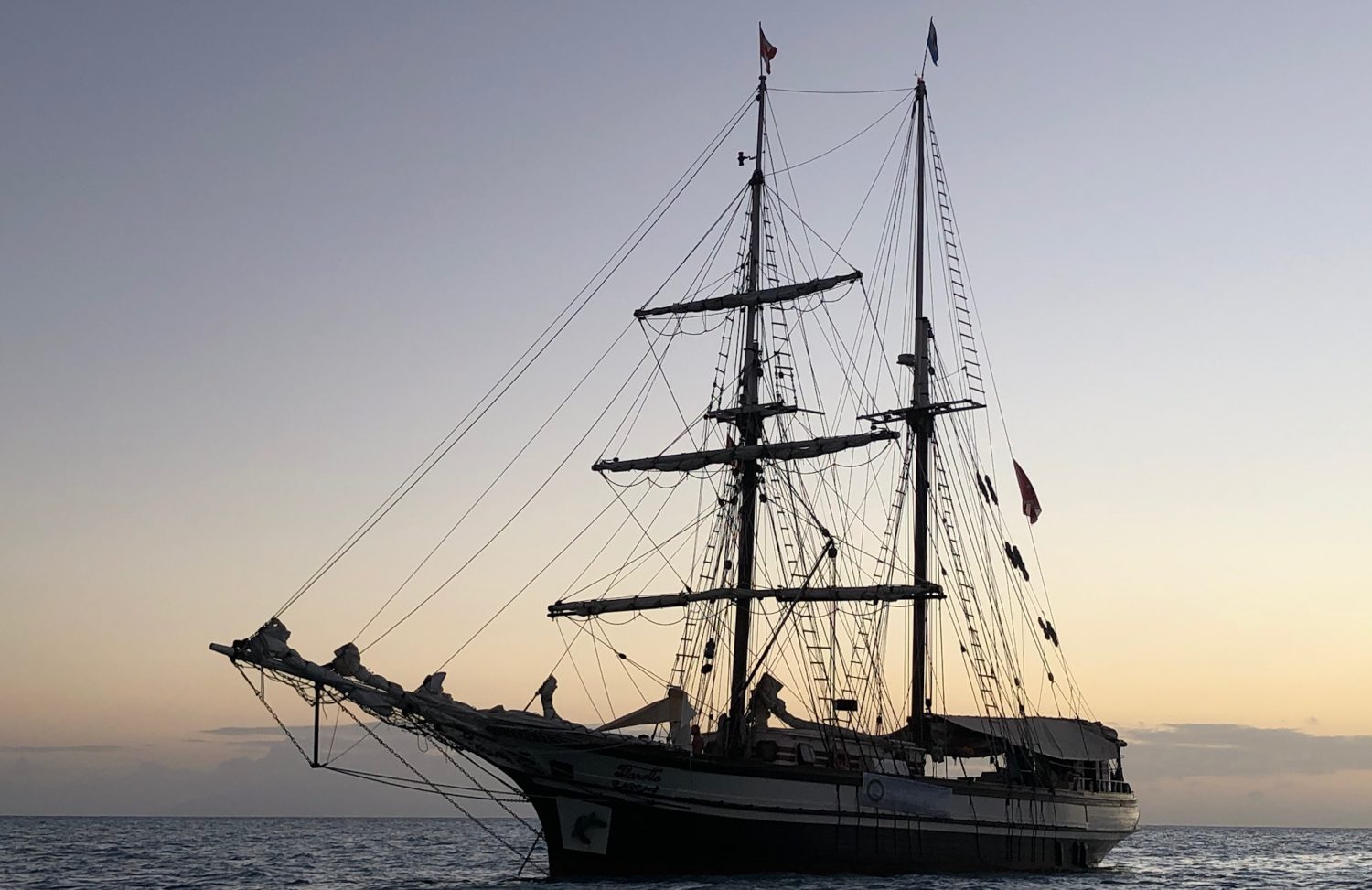We began the day in Albany and had a couple of stops in the area before heading west. First up, the Cheynes Beach Whaling Station, where commercial whaling was a serious business from 1952 to 1978. Unlike the Whale Museum in Eden on the NSW coast, this was clearly about MODERN whaling practices, and as such I didn’t appreciate it very much.
In the early days it was humpback whales that were being sought and hunted off the continental shelf in the Southern Ocean. There were spotter planes and harpoons with explosives in the tips and a process to inflate the whale after the kill so it would float until the whalers were ready to bring it in for the processing of the blubber for oil. After 1963 and some changes in the laws sperm whales became the primary target, and after Australia signed the global anit-whaling treaty in 1978 this whaling station closed down. I suspect I didn’t enjoy this any more than I would enjoy visiting an abbatoir — the killing of animals, which of course happens all the time for many good (commercial) reasons, isn’t something I need to know more about.
From there it was off to Tordirrup National Park and two natural wonders: the Natural Gap and the Natural Bridge. As you might expect, they are both rocks that have been worn away into a … gap… and a bridge. The interesting story was about the specific rocks, which was very much like granite, and it told the geological story of the separation of Australia from Antartica many thousands of years ago. And it appears that Australia is still separating — moving 5 cm each year further north. It’s a very windy spot, as might be expected on the Southern Ocean. And there’s one stupid tourist story that I heard more than once that took place at this spot. In 1978 a young man who needed a better photographic spot climbed the fence and while he noted the rogue wave he couldn’t escape it. The sea pulled him out, and he surfaced and somehow remained afloat while his friends contacted the authorities. A nearby whaler, the Cheynes 2 (out of the Cheynes Beach Whaling Station), made the rescue. As I said, stupid tourist.
Then onto Walpole and a lunch “cruise” at Nornalup Inlet, where the Deep river and the Frankland River meet at the sea. These are tidal rivers and are surrounded by different vegetation on all sides, from poisonous scrub to the eerily beautiful paperbark trees to the very tall Karri trees. The family who run this boating excursion are the Muirs, who have been at it for decades and claim a connection, albeit distant, to John Muir of California conservation fame. It rained for the entire time, but the captain kept us very entertained with historical, geological and random connections of people and places to Walpole. It was almost a stream of consciousness comedy act, but he was so quick witted, and incredibly well-informed and knowledgable about history that it was deemed amazing by all of us. The most interesting thing was that a box full of papers was uncovered in a boat shed in the area that contained papers and letters from Tolstoy, including his keynote speech for his 80th birthday party. Random but true.
Next stop was Valley of the Giants and the Tree Top Walk high in the tingle forest. The red tingle, the most prominent variety in the area can have a base circumference of up to 20m, which makes it the largest buttressing eucalyptus. It has a large hollowed out base as the root system is very narrow and as it spreads it essentially pulls the base apart. Since people (tourists) had a fascination with the tree, and in some cases trees with splits large enough to drive a car through (I’m reminded of some redwoods in northern California offering the same feature), it was decided to build a walkway among the forest so that it could be appreciated without being “loved to death”. The walk consists of 6 bridge spans reaching a height of 40m, which sway slightly despite the heavy metal beams holding it up! It was pretty spectacular but would’ve been more so without the rain!
Last stop Pemberton and the Karri Resort set on a lovely manmade lake, where every room has a balcony overlooking the karri trees and the lake. We passed some emu in a field coming in and learned that after the courting and mating dance between the sexes the egg(s) is/(are) laid and the male emu is expected to lay on it /(them) until it /(they) hatches, and raise the young alone, and the female heads out to find another mate. Once the chicks are old enough to be on their own, dad lays down and plays dead so that the chicks take off! Other than the Emperor Penguin I don’t know of other species where the male has such an active role in the offspring! We also passed fields of dozens of kangaroos and because I’ve simply not had enough of them yet I walked a bit to find and photograph them before dinner. Also had a great visit from a kookaburra.
